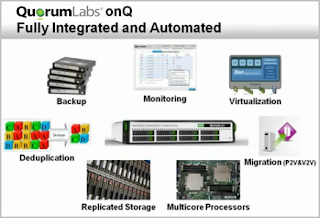PTS Data Center Solutions considers generators as a key to data center reliability. Supplementing a battery-based uninterruptible power supply (UPS) with an emergency generator should be considered by all data center operators. The question has become increasing important as super storms such as Hurricane Sandy in the Northeast United States knocked out utility power stations and caused many downed power lines, resulting in days and weeks of utility power loss.
Beyond disaster protection, the role of a backup generator to provide power is important when utility providers consider summer rolling blackouts and brownouts and data center operators see reduced utility service reliability. In a rolling blackout, power to industrial facilities is often shut down first. New data center managers should check the utilities contract to see if a data center is subject to such utility disconnects.
Following are questions to consider before, during, and after generator deployment.
What Should You Consider Before Generator Deployment?
Beyond disaster protection, the role of a backup generator to provide power is important when utility providers consider summer rolling blackouts and brownouts and data center operators see reduced utility service reliability. In a rolling blackout, power to industrial facilities is often shut down first. New data center managers should check the utilities contract to see if a data center is subject to such utility disconnects.
Following are questions to consider before, during, and after generator deployment.
What Should You Consider Before Generator Deployment?
- Generator Classification / Type. Will the generator be classified as an Optional Standby power source for the data center, a Code Required Standby power source for the data center, or an Emergency back-up generator that also provides standby power to the data center?
- Generator Size. When sizing a generator it is critical to consider the total current IT power load as well as expected growth of that IT load. Is specialized sizing software needed to properly size your generator?
- Fuel Type. Will the generators be diesel or gas powered? There are pros and cons to both.
- Deployment Location. Where will the generator be installed? Is it an interior installation or an exterior installation?
- Exhaust and Emissions Requirements. What exhaust emissions standard are required in your town, region, or state?
- Required Run-time. What is the expected run-time for the generator system? How much fuel needs to be on hand to support expected run-times?
.jpg) Commissioning. What is your commissioning plan? What type of rigging is required? What documentation is needed?
Commissioning. What is your commissioning plan? What type of rigging is required? What documentation is needed?- Load Testing. How will you perform load testing? Do you have access to a non-linear load bank with appropriate power factors for the generator to be tested?
- Servicing. What will the service schedule be for the generator? How will the initial servicing be performed during final commissioning and testing?
- Service Agreement. Is a service agreement in place with the local generator manufacturer’s representative?
- Preventative Maintenance. Preventative Maintenance should be performed at least twice a year. Most generator owners who envision their generator installation as being critical to their business execute a quarterly maintenance program.
- Monitoring. How is the generator tied into the building monitoring system? Who is monitoring that system for generator and ATS systems failure?
- Regular Testing. How often should testing completed to confirm availability of the generator? How should the testing be done?
- Maintenance. What are the manufacturer recommended maintenance intervals, work plans, maintenance milestones? What other factors related to the operational characteristics of the generator need to be considered?




















.jpg)
